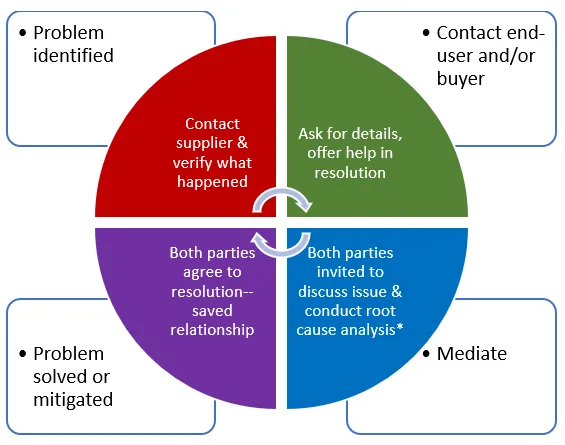Let’s look at a common challenge we face as supplier diversity professionals. A problem has occurred with one of our diverse suppliers that has impacted their ability to continue with a contract, or prevents them from obtaining future work.
At first, things seem to be fine with the award of a project to a diverse supplier who successfully bid and was awarded the contract based on the skills and abilities demonstrated. As any supplier diversity practitioner, once we have been successful in advocating for, and achieving progress in an award, we move on to the next opportunity for inclusivity only to be stopped dead in our tracks when we find out the end-user was less than satisfied.
You might be thinking, “There must be some mistake. How can this have gone wrong without any indication of an issue occurring?”
Later, you discover not only that a bridge you helped build has been burned, but also the trust the end-user had in you and your supplier is gone and the end-user has to rebid or replace the supplier. What do you do?
This is the second of a three-part installment in our blog series on the importance of developing your diverse suppliers. Read the other parts:
There should be a process, model, or outline by which not only you as the supplier diversity practitioner hold fast to, but also the end-user. There is a series of steps you must go through to mitigate the loss and triage the situation so that relationships that were difficult to build are not destroyed forever.
Situations like theses do not solve themselves, and great planning and controlling techniques do not assign themselves. We must be mindful as passionate experts in the field to stay engaged with the suppliers and offer solutions while serving as a mitigatory or liaison to help resolve or salvage the relationship.
One of the first things to do is gather information from both sides of the issue immediately upon learning of a problem. Oftentimes, learning of a problem varies and comes in different ways. Perhaps during a meeting where several stakeholders and decision-makers are together, the end-user shares their discontent with a diverse supplier and suggests that they would not be a good fit due to a situation that occurred unbeknownst to anyone in the room.
This type of reference sharing is not necessarily looked upon negatively, as we would not want to engage in business with someone who is under-performing. However, we want to be sure that, at the very least, both parties are able to come to the table to discuss what took place so there is time to correct any misunderstandings.
Likewise, if your diverse supplier is doing a superb job, you would certainly want that reference to be shared at that time, which is why we use past performance as a measurement of future success. However, we must be sure that, if the narrative is going to be detrimental to the future of inclusion, we must verify and confirm what took place and take every measure to communicate, repair, or explain if it was a simple misunderstanding.
Now back to that schema. Supplier diversity professionals have varying amounts of mental bandwidth available for their roles, depending on other difficult job demands requiring our attention. Having a schema will help take the cognitive burden off the supplier diversity professional, thereby freeing up bandwidth to allow them to focus on other pressing matters to increase inclusion.
A schema should be in place to solve these types of problems that might arise regarding your diverse suppliers so that there is a process that our brains can go to without having to use up valuable bandwidth. We can immediately jump into action.
About that root cause analysis… it’s as simple as asking the following questions:
… this leads to the final step of “problem solved or mitigated”.
Schemas can be put in place for most situations that arise and could be replicated with little tweaking when practicing the profession of supplier diversity. In many instances, I have received phone calls from other universities and private organizations – even some major ones – asking about the supplier diversity portal and database that I created. While the database is a standalone program within the system at Kent State University, the concept can be replicated with use of a schema.
In the third installment, let’s dive into a second example, which covers the most frequent request made to a purchasing department from divers suppliers – getting put on a bid list.


Veronica Cook-Euell, M.A., M.B.A., M.Ed is the Supplier Diversity Program Manager for Kent State University. She is responsible for developing strategies to increase minority business representation in securing contracts, driving supplier diversity initiatives, and serving as an advocate and a liaison for diverse suppliers. She can be reached at vcook3@kent.edu.